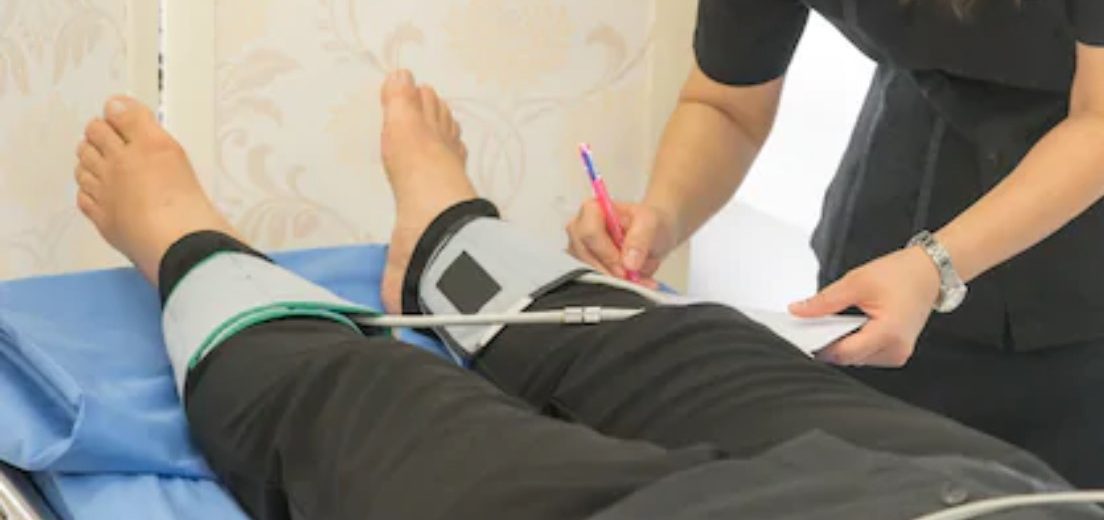Lower Limb Arterial & Venous Study

Lower Limb Arterial & Venous Study
What are vascular studies?
Vascular studies are a noninvasive (the skin is not pierced) procedure used to assess the blood flow in arteries and veins. A transducer (like a microphone) sends out ultrasonic sound waves at a frequency too high to be heard. When the transducer is placed on the skin at certain locations and angles, the ultrasonic sound waves move through the skin and other body tissues to the blood vessels, where the waves echo off of the blood cells. The transducer picks up the reflected waves and sends them to an amplifier, which makes the ultrasonic sound waves audible.
Vascular studies can utilize one of these special types of ultrasound technology, as listed below:
Doppler ultrasound
This Doppler technique is used to measure and assess the flow of blood through the blood vessels. The amount of blood pumped with each beat is an indication of the size of a vessel’s opening. Also, Doppler can detect abnormal blood flow within a vessel, which can indicate a blockage caused by a blood clot, a plaque, or inflammation.
Color Doppler
Color Doppler is an enhanced form of Doppler ultrasound technology. With color Doppler, different colors are used to designate the direction of blood flow. This simplifies the interpretation of the Doppler technique.
To assess blood flow in the limbs, pulse volume recordings (PVRs) may be performed. Blood pressure cuffs are inflated on the limb and blood pressure in the limb is measured using the Doppler transducer.
To assess the carotid arteries in the neck, a carotid duplex scan may be performed. This type of Doppler examination provides a 2-dimensional (2D) image of the arteries so that the structure of the arteries and location of an occlusion can be determined, as well as the degree of blood flow.
A carotid artery duplex scan is a type of vascular ultrasound study done to assess occlusion (blockage) or stenosis (narrowing) of the carotid arteries of the neck and/or the branches of the carotid artery. Plaque (a build up of fatty materials), a thrombus (blood clot), and other substances in the blood stream may cause a disturbance in the blood flow through the carotid arteries.
Other related procedures that may be used to assess the heart and circulatory system include resting and exercise electrocardiogram (ECG or EKG), Holter monitor, signal-averaged ECG, cardiac catheterization, chest x-ray, computed tomography (CT scan) of the chest, electrophysiological studies, magnetic resonance imaging (MRI) of the heart, myocardial perfusion scans, radionuclide angiography, and ultrafast CT scan. Please see these procedures for additional information.
